Comprehensive Guide to Revenue Cycle Management in Medical Billing
Revenue Cycle Management is a process where medicinal companies have a hospital that uses the software to have eye on the patient history in track by seeing their previous appointment from start to end of their final payment.
What is Revenue Cycle Management (RCM) in Medical Billing?
Revenue Cycle Management is a process where medicinal companies have a hospital that uses the software to have eye on the patient history in track by seeing their previous appointments from start to end of their final payment. Operative and productive software helps user to have no difficulty in payments and make it eligible to have revenue with the help of history and consistency of patient.
Understanding the RCM Cycle in Medical Billing
The RCM cycle have all the aspects that progressive software should have. These elements have following several important key points which are:
Charge Capture: It bring the end of a billing method and get the billable software to provide complete revenue information.
Patient Registration: It is the firts step where a person gets the information of a person and saves in the software for the billing process.
Claim Submission: A comprehensive and definite procedure gives way to submitting claims effectively to insurance carrier.
Revenue Collection: Making sure that the payments submitted on time and meticulously.
Denial Management: Applying the plan of action to work properly and minimize denials.
Key Steps in the RCM Cycle
Every degree of the RCM cycle is crucial for making sure the economic power of healthcare services:
Eligibility Verification: Checking patient insurance coverage to ensure services are protected, which reduces the hazard of chargebacks and denials.
Pre-authorization: Securing vital approvals previous to provider guarantee of the payment he paid.
Coding and Billing: The correctively giving command to system provides the chance of lesser mistakes and even the small delay in pending bills.
Charge Processing: the software will save everything and discussed in the system for proceed of payments and building trust in customer.
Accounts Receivable observe-up: handling brilliant debts and making sure well timed follow-up to enhance cash flow.
Excellent Practices for Optimizing the RCM system
Optimizing RCM entails an aggregate of technology, schooling, and compliance:
Generation Integration: using superior RCM software facilitates automate many factors of the RCM , from affected person scheduling to billing and collections, lowering mistakes and saving time.
Group of workers education: ordinary schooling periods for staff at the modern day RCM practices and technologies ensure efficiency and accuracy.
Compliance and guidelines: Staying updated with healthcare policies and making sure compliance is critical for fending off legal pitfalls and penalties.
Demanding situations and answers in RCM
Navigating RCM may be fraught with challenges, but strategic answers can alleviate many not unusual problems:
Not unusual RCM challenges: mistakes like coding mistakes, not on time payments, and coverage claim denials are well-known.
Answers: the routine check and balance of the software and constant connection and improving communication with the help of RCM experts makes it even better every time.
Conclusion:
When a properly and efficient RCM software works, it provides the high quality of accuracy and a trusted product in this field, which majorly focuses on the betterment of the customer. Because of these types of software in the medical field health care organization can built a higher rate of revenue by the end of every term, which leads to them to increase in the sales and profitability.
How Flock Consistently Achieves Revenue Growth for Clients
- 1 Fast Filing
- 2. Clean Claims
- 3. Tracking System
- 4. Rigorous Follow-up
- 5. A/R Management





